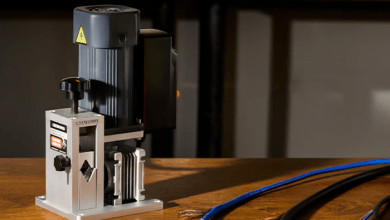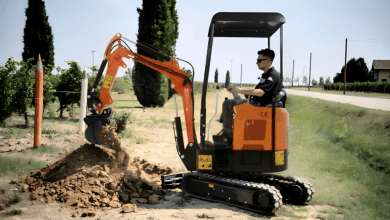
When buying tech tools that you expect to use for years, it helps to slow down and look at more than just the newest features. A sleek design or flashy specs might seem appealing at first, but what really matters is how well that device fits into your daily routine over time. A smart investment is one that works just as well a few years in as it does out of the box.
Whether you’re looking at a laptop, tablet, or desktop, it helps to think beyond short-term excitement. That means considering how you use your device now, how your needs might grow, and whether what you’re buying is built to handle all of that without needing constant upgrades. Focusing on the practical parts, like storage, physical build, and repair access, can save money and headaches later.
Choosing Storage That Lasts
Storage size isn’t merely a numbers game. It affects everything from how fast your system responds to how many files you can comfortably keep without shifting to external drives or relying too much on cloud storage. If you’re working with large files, managing creative projects, or planning to keep your device for several years, getting more storage upfront often feels more stable in the long run.
You might be comparing common options like 512GB and 1TB. The difference between 512GB and 1TB can be significant depending on how you use your device. For someone who mainly streams content and uses web-based tools, 512GB might be fine. But for people who install a lot of programs, work with video or photo files, or want fewer limits, 1TB tends to be the safer pick.
Checking Build Quality
Long-term use also depends heavily on how well a device is built. A plastic shell with flexible parts might look nice at first, but it’s not going to feel great after a year of heavy use. Things like keyboard firmness, screen hinge strength, and even port stability all start to matter more the longer you use the device. These are the things you notice only after months of carrying it around or opening and closing it multiple times a day.
If you rely on your tech daily, it makes sense to handle the device before buying or at least check detailed reviews that focus on physical wear. Some brands put more effort into long-lasting materials, while others focus more on visuals.
Planning for Repairs
No matter how careful you are, things can break or stop working. That’s why repair access is a big part of smart tech planning. Some devices are built in ways that make even simple fixes difficult, which often leads people to replace them sooner than expected. When a laptop or tablet has replaceable parts, a service-friendly design, and decent support, it stays usable for much longer.
It’s also worth looking into how available those repairs actually are. Some companies make parts easy to order or offer service plans with fast turnaround. Others may lock repairs behind warranty restrictions or third-party services.
Staying Compatible
New ports, accessories, and software updates are always rolling out, and it’s not always easy to keep up. That’s why checking for basic compatibility with emerging tech matters before you buy. Devices with newer ports, Wi-Fi standards, or Bluetooth versions are more likely to stay relevant as updates continue. It’s also useful to see whether the software you use will still be supported in a few years.
Compatibility is also about what you need day to day. If your current setup includes monitors, audio equipment, or specific accessories, you’ll want something that works with those without needing constant adapters or extra gear.
Portability vs. Durability
Light and slim devices are appealing when you’re always on the move, but they don’t always hold up well if you’re rough on your gear or using it daily. Thicker models might weigh a bit more, but they can be more solid, especially when it comes to resisting drops, scratches, and general wear. The tradeoff depends on how you use your tech most of the time.
If you’re mostly working from one space, durability should probably win out. If you travel or commute often, weight might matter more. Either way, it helps to know what kind of use your device will get. Matching build to your habits helps avoid feeling stuck with something that’s either too delicate or unnecessarily bulky.
Looking at Brand History
Not all brands support their devices the same way. Some are consistent with updates and parts availability, while others fall off quickly once a new model comes out. Looking into a brand’s track record tells you a lot about how your experience might go after year one. If they’ve supported older models well, that’s a good sign.
Reputation matters for support down the line. Whether it’s repair help, regular updates, or even trade-in value, a well-established brand that doesn’t drop its users tends to be a safer bet when thinking long-term.
Energy and Power Use
A device that runs hot or drains quickly isn’t just annoying; it can wear itself out faster. Energy use doesn’t only affect how long your battery lasts during the day. It also plays into how long the internal components stay in good shape. Heat buildup over time can shorten the lifespan of key parts.
Looking at how a device manages power, whether it stays cool, charges efficiently, or offers settings for battery health, can help you pick something that doesn’t just perform well now, but continues to do so over time. It keeps things steady and avoids gradual problems that aren’t obvious right away.
Understanding Processors
Processing power affects more than just how fast things load. It determines how well your device can multitask, how smoothly it handles software updates, and how long it stays capable as new programs demand more. Even if you don’t need top performance today, you might later, and swapping out a processor isn’t always an option.
It’s worth comparing models in the same family to see which chips offer longer support windows or better cooling. Some processors are just built to last longer. Choosing a slightly stronger processor now can give your device a longer runway before things start to lag or feel outdated.
Battery Reliability
A battery that performs well in the first year but drops fast after that becomes a problem, especially if you’re away from outlets often.
It helps to check whether a device has battery health tools built in and how easy it is to replace or repair the battery later. A long-lasting battery setup adds to your device’s reliability and gives you more freedom in how and where you use it long-term.
Long-term tech tools don’t need to be the most expensive or feature-heavy. What matters is whether they can keep up with you, day after day, for more than just a short window. Storage, build quality, power use, and support all come into play, and they’re easy to overlook when focusing on the shiny stuff.




